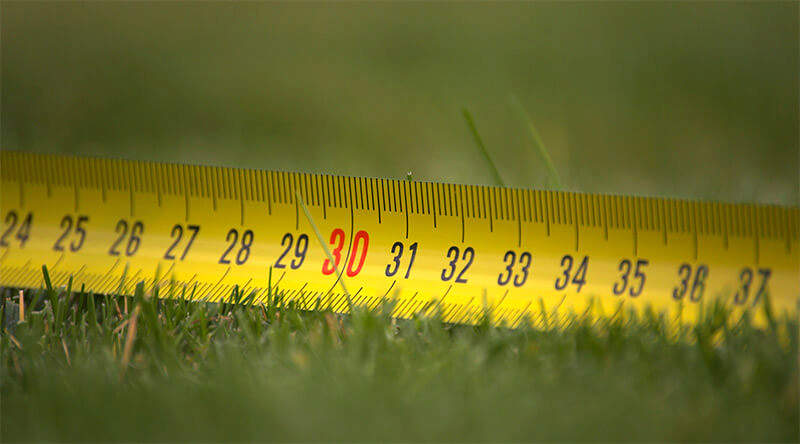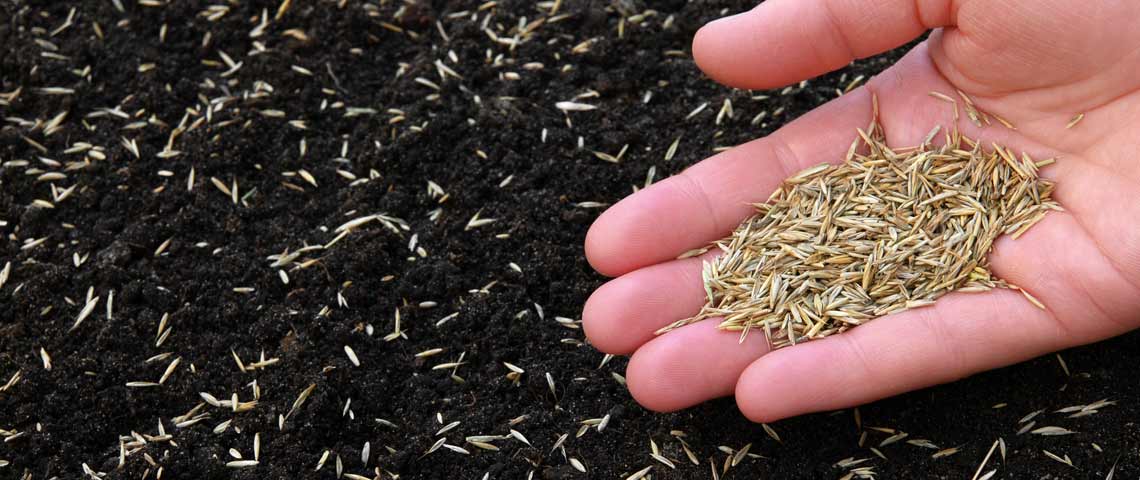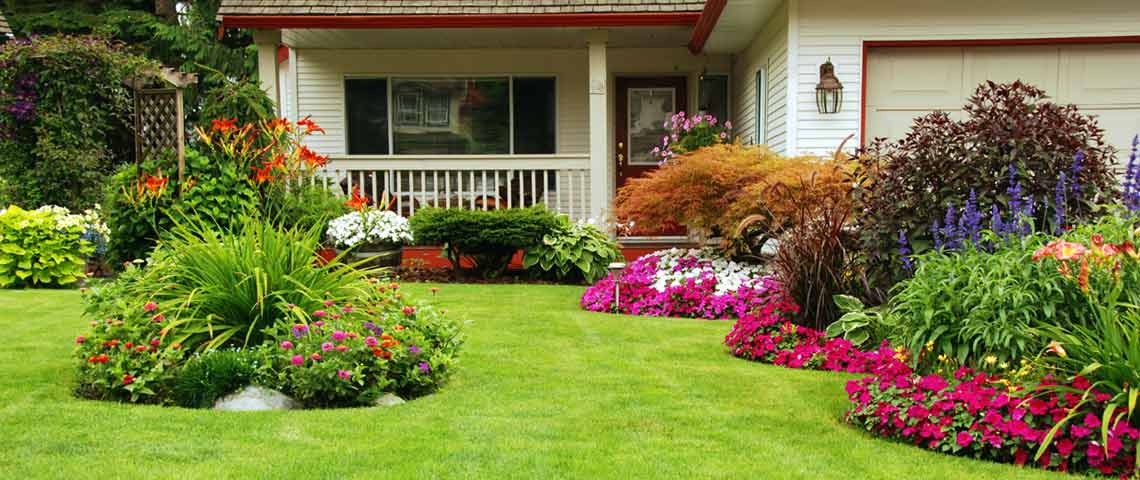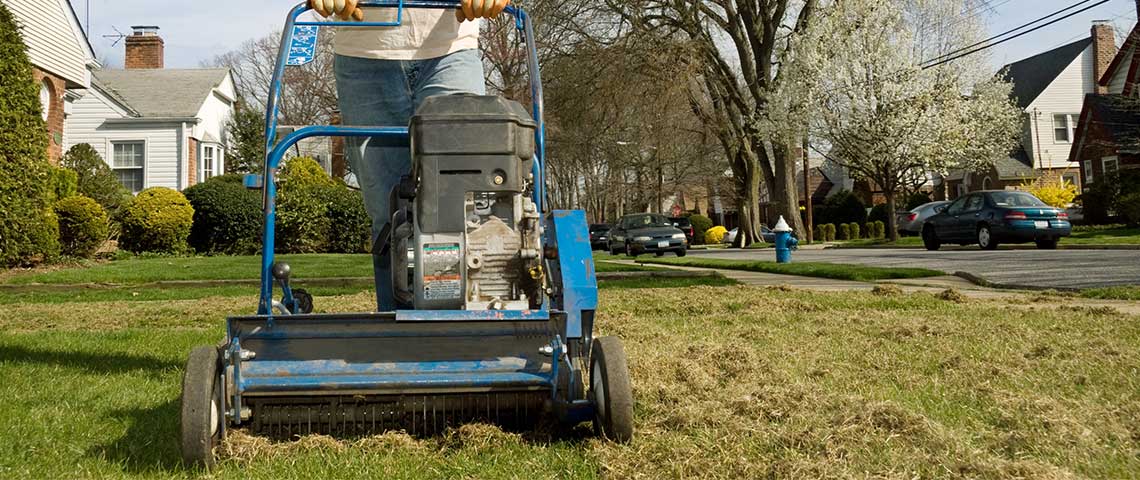How to Avoid Common Grass Seed Mistakes
Creating a lush, vibrant lawn takes commitment, but the rewards of a successful grass seed project are worth the time and resources you invest. A beautiful lawn can improve your home's value, benefit the environment and enhance your family's quality of life. Even if you're a first-time lawn grower, you can seed right and avoid these common mistakes:
- Planting the wrong type of seed
- Skipping the soil test and recommendations
- Using lime incorrectly or unnecessarily
- Ignoring recommended seeding rates
- Miscalculating your lawn dimensions
- Planting without regard for proper timing
- Using weed treatments or weed & feed fertilizers with seed

Healthy, well-balanced soil provides a solid foundation for grass growth.
1. Planting the wrong type of seed
Choosing appropriate grass varieties is the first step in ensuring your lawn performs up to your aspirations. Grasses vary widely in their preferences and tolerances, just like other types of plants. Kentucky bluegrass and Bermudagrass, for example, differ significantly in climate and maintenance requirements. Planting grass varieties appropriate to your growing region gives your seed a natural advantage.
Even with similar seed types, all grass seed isn't equal. Learn what's actually inside the seed bags you or your lawn professional buy. By understanding the seed tags on grass seed products, you can be sure you invest in quality seed. Cheaper price tags can mean less seed versus fillers, old seeds past their prime, more weed seeds and lower germination rates. Getting seed right from the start benefits your lawn and budget.
2. Skipping the soil test and recommendations
Seeding success depends on an environment conducive to good grass growth. Knowing how your soil measures up on certain essentials, such as soil pH and plant nutrients, allows you to provide the foundation an outstanding lawn needs. Soil testing processed through a reputable soil laboratory eliminates guesswork and reveals changes you need to make.
Without knowing where your soil stands, well-intended soil amendments and fertilizers can harm grass instead of help — or simply go to waste. Incorporating your specific soil lab recommendations helps circumvent potential problems and unnecessary setbacks. That's one reason turf professionals emphasize regular soil testing to start seed right and keep lawns healthy and vibrant. Your local county extension office can help with testing kits and lab referrals.
3. Using lime incorrectly or unnecessarily
Many homeowners think lime is a lawn care necessity, but that doesn't hold true across the board. Normal lawn care can naturally cause soil pH to drop lower over time, and lime applications benefit lawns that need pH raised. But in some cases, soil pH may already be high. Using too much lime or applying it unnecessarily can be as damaging as failing to add lime when it's needed.
When soil test results show your lawn's soil pH is below levels needed for optimal grass health, liming in accordance with recommendations restores proper pH balance, increases nutrient availability and helps keep lawns green. While many lime products are slow to work, products such as Pennington Fast Acting Lime speed up the process and start working immediately.
4. Ignoring recommended seeding rates
Using the proper amount of seed for your project influences success, whether you're starting from scratch or overseeding an existing lawn. New lawns or spot repairs take about twice the amount of seed needed for overseeding thin areas. Quality grass seed labels include guidance on optimal seeding rates to maximize your results.
Don't overdo or cut corners. Too much grass seed causes undue competition for resources such as light, water and nutrients, and grass seedlings struggle as a result. Too little seed leaves lawns thin or bare. Always follow “best practice" guidelines for planting grass seed, including site preparation and good seed-to-soil contact, and stick with recommended seeding rates for lush results.
5. Miscalculating your lawn dimensions
Getting your seeding rates right requires knowing the correct size of the area you need to cover. One of the most common problems grass professionals see is when homeowners misjudge their actual lawn areas and over-apply grass seed or other products, such as fertilizers and herbicides.

Time spent measuring your lawn prevents wasted products and labor.
Knowing your total property size is just the start. All non-lawn areas must then be deducted. This includes the footprints of your house, garage and outbuildings, as well as walkways and the driveway. Only then can you calculate your actual lawn area and the amount of seed you need. Time spent on proper measurements prevents wasted product, wasted money and poor results. Get it right and every bit of seed and labor work in your favor.
6. Planting without regard for proper timing
It can be tempting to plant seed as soon as the need arises. But proper timing has an important impact on results. Grass growth occurs in seasonal cycles, which vary according to the grass types common to different regions. Timing your seed projects to coincide with growing cycles greatly improves your rate of success.
For most of the country, fall is the best time to plant grass seed. This is when cool-season grasses such as Kentucky bluegrass and tall fescues peak in growth, and conditions enhance fast germination and establishment. When paired with innovations such as water-conserving Pennington Smart Seed, proper timing leads to other advantages, including less input of resources, less maintenance and better results.
7. Using weed treatments or weed & feed fertilizers with seed
One of the ways weed treatments work is by preventing germinating seeds from establishing roots. But these products, known as pre-emergents, can't distinguish between harmful weed seeds and desirable grass seed you put down. Using these products too close to newly planted seed — in timing or proximity — stops grass seed in its tracks, along with the weeds. Post-emergent weed treatments aimed at existing broadleaf weeds can also injure immature grass seedlings.

Weed treatments and fertilizers used too close to planting can injure seed.
Always read and follow herbicide and fertilizer labels, especially the instructions for use on newly seeded lawns and your grass type. As a general rule, avoid pre-emergent weed treatments at least 10 to 12 weeks before seeding — or longer for some products. After planting, reserve broad-spectrum weed treatments until new lawns have been mowed at least two to three times; for fall-planted seed, that usually means spring.
When it comes to your lawn aspirations, you can bypass common grass seed mistakes and head straight for success. Make the most of your investment of time, money and grass seed, and enjoy the exceptional results. Pennington is committed to helping you grow the finest lawn possible and enjoy all the benefits that a beautiful, healthy lawn holds.
Pennington and Smart Seed are trademarks of Pennington Seed, Inc.




